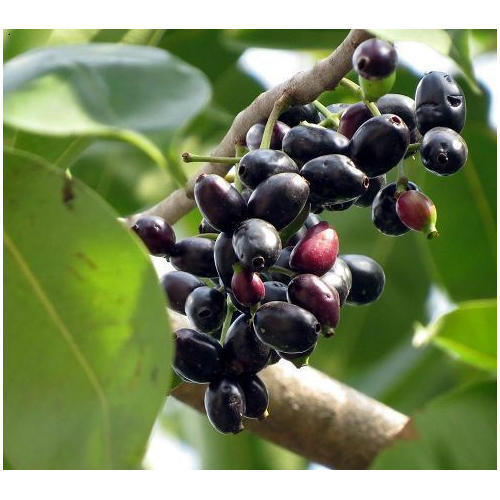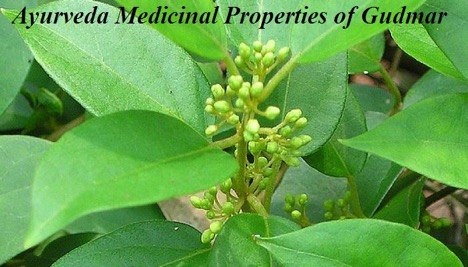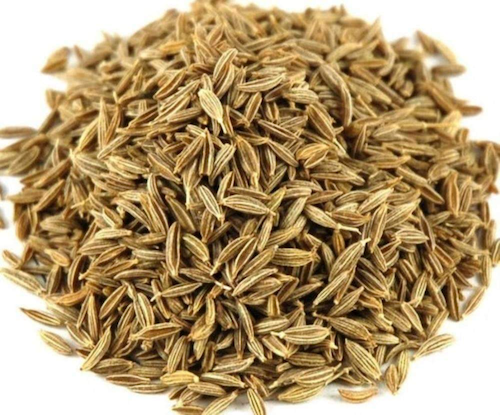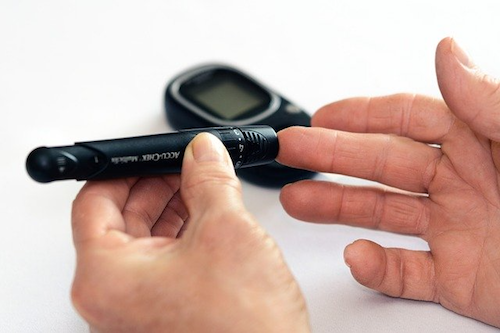Diabetes, a chronic metabolic disorder, is characterized by elevated blood sugar levels resulting from the body’s inability to produce sufficient insulin or use it effectively. As of the last assessment, its global prevalence has been alarmingly on the rise. Factors such as sedentary lifestyles, unhealthy dietary patterns, and an aging population contribute to its increased incidence. The World Health Organization has flagged it as a major health concern due to the severe complications it can trigger, ranging from erectile dysfunction, cardiovascular diseases to renal failures and vision impairment. This disease not only poses a threat to individual health but also imposes a significant economic burden on healthcare systems worldwide. Thus, understanding and addressing its spread is imperative for safeguarding global health and ensuring the well-being of future generations. In this article let us discuss Ayurvedic Treatments for Diabetes.
Table of content
Panchakarma Treatment for Diabetes
Ayurvedic Medicine for Diabetes.
ayurvedic diet and foods for diabetes
Ayurvedic Home Remedies for Diabetes
Diabetes or Madhumeha in Ayurveda
Panchakarma Treatment for Diabetes
Panchakarma, stemming from the ancient Indian medical system of Ayurveda, is a detoxification and rejuvenation procedure aimed at purifying the body, enhancing digestion, and re-establishing equilibrium. When it comes to diabetes, Panchakarma offers a comprehensive therapeutic approach that addresses the root causes of the disorder by balancing the body’s energies or doshas.
Panchakarma consists of five main treatments, hence the name ‘Pancha’ (five) and ‘Karma’ (action). Here’s how each of these treatments can be beneficial for diabetes:
1. Vamana (Emesis Therapy):
This involves inducing vomiting after consuming a specific medicinal drink. It’s particularly effective for those with diabetes where an imbalance of the Kapha dosha (linked with mucus and phlegm) is predominant. Vamana helps in expelling excess mucus from the body, improving metabolic functions.
2. Virechana (Purgation):
Administered for those with Pitta (fire and water) imbalance, this process involves the intake of herbal laxatives. It aids in cleansing the small intestine and liver, promoting insulin regulation.
3. Basti (Enema Therapy):
This is considered the most effective treatment in Panchakarma for diabetes, especially when Vata dosha (linked with air and space elements) is disturbed. Medicated oils or herbal concoctions are introduced rectally, helping in balancing the Vata dosha. It also rejuvenates the pancreas, enhancing insulin secretion.
4. Nasya (Nasal Instillation):
A process where medicated oils or powders are administered through the nostrils. This is beneficial in clearing up channels, improving breathing, and indirectly assisting metabolic processes.
Alongside these primary treatments, Panchakarma incorporates secondary practices such as Abhyanga (therapeutic oil massage), Swedana (herbal steam bath), and other therapies to amplify its effectiveness. For individuals with diabetes, undergoing Panchakarma can lead to improved glucose metabolism, enhanced insulin sensitivity, and overall better health. However, it’s crucial to consult with an experienced Ayurvedic practitioner before commencing Panchakarma, as the treatments should be tailored according to the individual’s constitution, current health condition, and the type and stage of diabetes.
Ayurvedic Medicine for Diabetes.
Ayurveda, employs a myriad of herbs to manage and mitigate various ailments. Among the vast pharmacopeia, certain herbs stand out for their effectiveness in balancing blood sugar levels and supporting metabolic processes. Here are five such vital Ayurvedic herbs that have garnered attention for their efficacy against diabetes:
Bitter Melon (Momordica Charantia) or Karvellaka
Often referred to as Karela in India, bitter melon is a green, cucumber-shaped fruit with a rough texture and bitter taste. This is known as karavellaka in ayurveda. Bitter melon contains bioactive compounds like charantin, vicine, and polypeptide-p, all of which have shown to have hypoglycemic effects. These components either enhance insulin secretion or direct glucose metabolism, thus aiding in lowering blood sugar levels. According to principles of ayurveda its bitter property (tikta rasa) and Tissue drying properties ( ruksha guna), help to balance kapha dosha.
It can be consumed as a vegetable in meals, taken as a juice, or ingested in the form of capsules or powders.
2. Fenugreek (Trigonella Foenum-Graecum) or Methika
Fenugreek, known as Methi in Hindi, is a small green herb with white flowers. Its seeds are commonly used as a culinary spice and for medicinal purposes. This herb is known as methika in ayurveda. Rich in soluble fiber, fenugreek seeds can slow down the absorption of carbohydrates and sugars. The amino acid 4-hydroxyisoleucine present in the seeds aids in increasing insulin sensitivity. It balances Kapha and Vata.
Seeds can be soaked in water overnight and consumed the next day or ground into powder and used in meals. Fenugreek leaves are also eaten as a vegetable.
3. Gymnema Sylvestre (Gurmar) or Madhunashini
Commonly called Gurmar, meaning “sugar destroyer” in Hindi, Gymnema Sylvestre is a woody climbing shrub native to India and Africa. It is known as madhunashini or mesha shrungi in ayurveda.
Gymnema contains compounds like gymnemic acids which inhibit the absorption of sugar in the intestines. It also has properties that enhance insulin function and regeneration of pancreas islet cells, making it valuable in managing diabetes. MadhuNashini means destroyer of sweetness in body.
The leaves of the plant are dried and powdered to be consumed as a supplement or brewed as a herbal tea.
4. Cinnamon (Cinnamomum Verum) or Twak
A popular spice in many cuisines, cinnamon is derived from the inner bark of the Cinnamomum tree. This is known as twak in ayurveda and is recommended in treatment of obesity and diabetes.
Cinnamon has bioactive components that have been found to improve insulin sensitivity, allowing cells to use glucose more efficiently. Furthermore, cinnamon can slow down the breaking of carbohydrates in the digestive tract, leading to a slower rise in blood sugar after meals. Based on principles of ayurveda, it balnces vata and kapha. But increases pitta.
Ground cinnamon can be sprinkled on various dishes, added to smoothies, or even brewed as a warm, comforting tea.
5. Turmeric (Curcuma Longa) or Haridra or Haldi
A golden-yellow spice derived from the root of the Curcuma longa plant, turmeric is an integral ingredient in many Asian cuisines and is celebrated for its therapeutic properties. This is known as Kanchani, haridra, gowri in ayurveda.
Curcumin, the active ingredient in turmeric, is known for its anti-inflammatory and antioxidant properties. It can improve insulin function, reduce insulin resistance, and lower blood sugar levels. It balances all doshas.
Turmeric powder can be incorporated into dishes, taken as a supplement, or brewed as tea. Combining it with black pepper can enhance the absorption of curcumin.
Ayurvedic diet and foods for diabetes
Ayurveda, emphasizes a harmonious integration of the body, mind, and spirit. Central to this philosophy is the idea that diet plays a pivotal role in maintaining health and preventing diseases. Given the modern-day rise in metabolic disorders, Ayurveda’s dietary principles present potential remedies to offset and manage conditions like diabetes.
Balancing Doshas:
In Ayurveda, the human body is governed by three primary energies or doshas – Vata (air and space), Pitta (fire and water), and Kapha (earth and water). An imbalance in these doshas can lead to health issues. Specifically for diabetes, an excess of Kapha dosha is often implicated. A Kapha-pacifying diet, which includes foods that are light, dry, and warm, can be beneficial.
Key Dietary Principles:
1. Whole Grains: Opt for unrefined, whole grains like barley, millet, wheat (godhuma), and quinoa. Barley, in particular, is highly recommended in Ayurveda for its Kapha-balancing properties. These grains have a low glycemic index, ensuring a gradual release of sugar into the bloodstream.
2. Vegetables: Emphasize leafy greens and non-starchy vegetables like spinach, kale, brussels sprouts, moringa ( shighru), methika or fenugreek, haridra or turmeric, okra (bhendi or lady finger), Twak or cinnamon, Karavellaka or bittergourd, garlic or lashuna, amalaki or amla ( Indian gooseberry), maricha (pepper), patola ( snake gourd), Jambu or Black Jamoon Fruit, Saindhava Lavana (rock salt).and broccoli. They are high in fiber and nutrients but low in calories and carbohydrates, making them ideal.
3. Legumes: Beans and lentils are protein-rich and can be a primary protein source. Ayurveda acharyas recommend to use Kulattha (horse gram), Mudga (green Gram), Chanaka ( chick pea), and Aadhaki ( pegion pea),. They also provide sustained energy, helping stabilize blood sugar levels.
4. Dairy: While dairy is permissible, it should be consumed in moderation. Opt for fresh, non-homogenized milk. Ayurveda also values ghee (clarified butter) for its medicinal properties, but it should be used sparingly.
5. Spices: Spices like turmeric, cinnamon, saunf or fennel seeds, fenugreek, ginger, and cumin are not just flavor enhancers but also possess therapeutic properties. For instance, cinnamon can improve insulin sensitivity, and turmeric has anti-inflammatory benefits.
6. Nuts and Seeds: While nuts and seeds are nutritious, they should be consumed in moderation due to their high-caloric nature. Flaxseeds, chia seeds, and walnuts can be particularly beneficial due to their Omega-3 fatty acid content.
7. Fruits: Favor astringent fruits like berries, papaya and pomegranates. While fruits are nutritious, those with high sugar content, like ripe bananas and grapes, should be consumed less frequently.
8. Avoid Refined Sugars: Processed and sugary foods exacerbate Kapha imbalance and can lead to spikes in blood sugar. Opt for natural sweeteners like honey, but even these should be used sparingly.
9. Hydration: Drink ample water throughout the day, but avoid ice-cold beverages. Herbal teas, particularly those with cumin, coriander, and fennel, can be beneficial.
10. Meal Times: Regularity in meal times is emphasized. Ayurveda suggests consuming a substantial breakfast, a primary meal at mid-day when the digestive fire (Agni) is at its peak, and a light dinner.
Other Considerations:
Mindful Eating: Ayurveda encourages being present during meals, chewing food thoroughly and enjoying the flavors, textures, and aromas.
Fasting: Periodic fasting or light-meal days can be beneficial. However, this should be undertaken based on individual constitutions and under expert guidance.
Avoid Overeating: Listen to your body’s cues and avoid eating beyond satiety. Overeating can strain the digestive system and exacerbate Kapha imbalance.
In conclusion, while Ayurvedic dietary principles provide a roadmap for healthy eating, individual needs can vary. It’s essential to tailor dietary practices based on one’s constitution (Prakriti), current health condition, and external factors like season and environment.
Ayurvedic Home Remedies for Diabetes
Ayurveda, advocates a holistic approach to wellness, emphasizing the importance of harmony between the body, mind, and spirit. Central to Ayurvedic practices are the uses of herbs and spices, not only as culinary delights but also as medicinal agents. With a surge in metabolic disorders, the wisdom of Ayurveda offers potential avenues to manage conditions like diabetes through home remedies using these potent herbs and spices.
Soaked Fenugreek Seeds
Fenugreek seeds, known as ‘Methi’ in Hindi and Methika in ayurveda, are commonly used in Indian cuisine. They have a slightly bitter taste but are packed with medicinal qualities. Soak one tablespoon of fenugreek seeds in water overnight. In the morning, consume the water along with the seeds on an empty stomach. Fenugreek seeds are rich in soluble fiber, which helps in slowing down the digestion and absorption of carbohydrates. This, in turn, can aid in controlling blood sugar levels.
Cinnamon (Cinnamomum Verum) Tea
Cinnamon, a fragrant spice derived from the inner bark of trees from the Cinnamomum family, is renowned for its sweet-spicy taste and aroma. This is known as dalchini in hindi and twak in ayurveda. Brew a soothing tea by boiling half a teaspoon of ground cinnamon in a cup of water for a few minutes. Drink this once daily. Alternatively, you can sprinkle powdered cinnamon on your meals. Cinnamon has bioactive compounds that can improve insulin sensitivity, ensuring cells absorb glucose more effectively. This process helps regulate blood sugar levels in the bloodstream.
Bitter Melon (Momordica Charantia) or Karela Juice:
Often referred to as ‘Karela’ in Hindi, bitter melon is a green, cucumber-shaped fruit with a distinctly bitter taste. This is known as karavellaka in ayurveda.Extract juice from a fresh bitter melon. Consume around one glass of this juice on an empty stomach every morning. For those who find the taste too bitter, it can be diluted with some water. Bitter melon contains compounds like charantin and polypeptide-p which possess blood sugar-lowering properties. They play a role in enhancing glucose metabolism.
Turmeric (Curcuma Longa) milk or Haldi Milk
Turmeric, known for its vibrant golden hue, is a staple in many Asian cuisines. Beyond its culinary use, it’s revered for its anti-inflammatory and antioxidant properties. It is known as haldi in hindi and haridra in ayurveda. Mix a teaspoon of turmeric powder in warm milk and drink it daily. This preparation, often called “golden milk”, is both soothing and medicinal.
Curcumin, the active ingredient in turmeric, can improve insulin function, reduce insulin resistance, and support balanced blood sugar levels.
Amla (Indian Gooseberry) Juice
Amla, or Indian gooseberry, is a sour fruit and holds a special place in Ayurvedic medicine due to its myriad health benefits. It is known as amalaki in ayurveda. Fresh amla juice can be consumed daily. If fresh amla is unavailable, dried amla powder mixed with water can serve as an alternative. About one teaspoon daily is recommended. Amla is rich in vitamin C and other antioxidants. It aids in the proper functioning of the pancreas, which in turn can help in the efficient secretion of insulin.
In summary, while these Ayurvedic remedies offer a natural approach to managing and potentially alleviating the symptoms of diabetes, it’s crucial to remember that they should complement, not replace, prescribed treatments. Regular monitoring of blood sugar levels is essential, and before integrating any new remedy into one’s regimen, consultation with healthcare professionals is imperative to ensure the best outcomes.
Regular consultations with both Ayurvedic and modern medical practitioners ensure a comprehensive approach to managing and potentially reversing the adverse effects of diabetes.
Diabetes or Madhumeha in Ayurveda
In Ayurveda, diabetes is referred to as “Madhumeha.” The term “Madhu” translates to honey or sweet, and “Meha” signifies excessive urination – a reference to the sweet urine characteristic of diabetic patients. “Madhumeha” comes under a group of diseases called “Prameha”. Any disease which comes under prameha may become “madhumeha” or diabetes, if untreated.
Ayurveda perceives diabetes not just as a simple sugar metabolism disorder, but as an imbalance in the body’s three fundamental energies or doshas – Vata, Pitta, and Kapha. Specifically, it is associated with vitiation of the Kapha dosha, which when imbalanced, disrupts the body’s metabolism leading to excess sugar in the blood. However, as the disease progresses, it may also involve the other doshas.
Dietary habits, sedentary lifestyle, and genetic predisposition are seen as primary causes for the imbalance. Factors like overconsumption of foods rich in carbohydrates, fats, and proteins; and indulgence in stress, sleep, and sedentary behavior aggravate the doshic imbalance.
To treat Madhumeha, Ayurveda prescribes a holistic approach. This includes dietary modifications, herbal remedies, yoga, meditation, and lifestyle changes tailored to the individual’s constitution or prakriti. The objective is not just to manage blood sugar levels but to restore the harmony of the doshas, facilitating overall health and well-being.
Author: Dr. Savitha Suri Consultant Ayurvedic Physician






Pingback: Benefits of Methi or fenugreek, seeds, leaves for diabetes, weight loss, hair and skin. - Ayurveda Remedies, Tips and Treatment
Pingback: Ayurvedic Treatment for Male Infertility
Pingback: Ayurveda Panchakarma Treatment - A Detoxification Therapy
Pingback: Natural Ayurvedic Remedies for Diabetes
Pingback: Natural Ayurvedic Herbal Home Remedies for Psoriasis
Pingback: How to Get Rid of Acne and Pimple With Ayurvedic Home Remedies ?
Pingback: Low Sperm Count and Semen Volume in Diabetes - Ayurvedic Treatment
Pingback: Ayurvedic Home Remedies for Weight Loss After Delivery
Pingback: Winter Skin Care - An Ayurvedic Way
Pingback: Ayurvedic Treatment, tips and Home Remedies for Dry Skin
Pingback: Clinical Management of Diabetes in Ayurveda
Pingback: Health Benefits of Coriander/cilantro, seeds, leaves,
Pingback: Best fruits and Nuts for Erectile Dysfunction or ED or Impotence
Pingback: Ayurvedic Treatment for PCOD or PCOS
Pingback: Vajikarana Foods/ Milk / Recipes /
Pingback: Health Benefits and Uses of Pomegranate, Its Peel and Juice
Pingback: Papaya the Best Fruit for Diabetes, weight loss and PCOS - An Ayurveda View
Pingback: Cinnamon or Dalchini Uses and Benefits - An Ayurveda View
Pingback: Gudmar or Gymnema Sylvestre Plant Uses
Pingback: Walnuts for Erectile Dysfunction, Sperm and PCOS
Pingback: Rohitaka Health Benefits and Uses
Pingback: Fatty Liver - An Ayurveda View
Pingback: Urad Dal or Black Gram Recipes to Improve Strength and Body Weight
Pingback: Ayurveda Medicinal Uses and Health Benefits of Lotus Flower
Pingback: Stretch Marks Treatment in Ayurveda
Pingback: Ayurvedic Liver Detox at Home
Pingback: Erectile Dysfunction in Older Males - Causes and Treatment
Pingback: Ayurvedic Treatment for BPH (Prostate Enlargement )
Pingback: Five Effective Ayurvedic Tea Recipes for Weight Loss
Pingback: What are the Health Benefits of Guggul or Guggulu ?
Pingback: Ayurveda Health Benefits of Vibhitaki - Bibhitaki - bahera-Terminalia Bellirica
Pingback: Jamun Fruit or Jambu Fruit or Java Plum for Diabetes and Weight Loss
Pingback: Health Benefits and Uses of Ashwagandha
Pingback: Ayurveda Health Benefits and Uses of Neem
Pingback: Erectile Dysfunction or Klaibya -An Ayurveda View
Pingback: Okra / Lady Finger for Erectile Dysfunction, Diabetes , UTI and Cystitis
Pingback: Health Benefits of Green Gram - Moong/dal/sprouts- Vigna radiata (mung)
Pingback: Ayurveda or Ayurvedic Diet Plan For PCOS
Pingback: An Ayurvedic Skin Detox at Home
Pingback: Natural Ayurvedic Tips for Good Sleep
Pingback: Ayurvedic Remedies for Cystitis in Females
Pingback: Benefits of ayurvedic daily routine Dinacharya
Pingback: Low Testosterone – Causes, Symptoms, Ayurvedic Treatment and Booster Herbs.